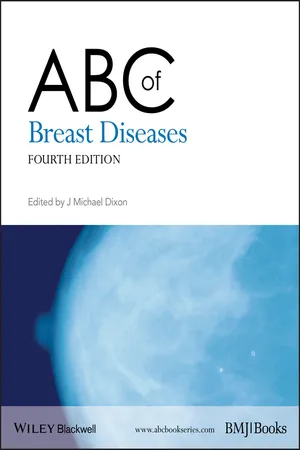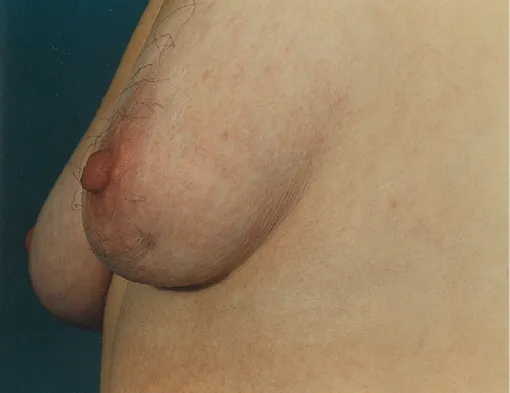
- English
- ePUB (mobile friendly)
- Available on iOS & Android
ABC of Breast Diseases
About This Book
The ABC of Breast Diseases provides comprehensive guidance to the assessment of symptoms, and how to manage all common breast conditions and provides guidelines on referral. It covers congenital problems, breast infection and mastalgia, before addressing the epidemiology, prevention, screening and diagnosis of breast cancer. It outlines the treatment and management options for breast cancer within different groups and includes new chapters on the genetics, prevention, management of high risk women and the psychological aspects of breast diseases.
Edited and written by internationally renowned experts in the field and highly illustrated in full colour, this fourth edition remains a practical guide for general practitioners, family physicians, practice nurses and breast care nurses as well as for surgeons and oncologists both in training and recently qualified as well as medical students.
Frequently asked questions
Information
- Breast conditions account for approximately 25% of all surgical referrals
- Guidelines for referral exist to ensure that patients with breast cancer do not suffer delays in referral
- Cancer can present as localised nodularity, particularly in young women
- All discrete masses and the majority of localised asymmetric nodularities require triple assessment
- Delay in diagnosis of breast cancer is the single largest cause for medicolegal complaints


| Lump |
|
| Pain |
|
| Nipple discharge |
|
| Nipple retraction or distortion |
| Nipple eczema |
| Change in skin contour |
| Family history |
| Request for assessment of a woman with a strong family history of breast cancer should be to a family cancer genetics clinic. |
|

Assessment of Symptoms
Patient's History





Breast Palpation
Table of contents
- Cover
- Title Page
- Copyright
- Contributors
- Preface
- Chapter 1: Symptoms, Assessment and Guidelines for Referral
- Chapter 2: Congenital Problems and Aberrations of Normal Development and Involution
- Chapter 3: Mastalgia
- Chapter 4: Breast Infection
- Chapter 5: Breast Cancer: Epidemiology, Risk Factors and Genetics
- Chapter 6: Prevention of Breast Cancer
- Chapter 7: Screening for Breast Cancer
- Chapter 8: Breast Cancer
- Chapter 9: Management of Regional Nodes in Breast Cancer
- Chapter 10: Breast Cancer: Treatment of Elderly Patients and Uncommon Conditions
- Chapter 11: Role of Systemic Treatment of Primary Operable Breast Cancer
- Chapter 12: Locally Advanced Breast Cancer
- Chapter 13: Metastatic Breast Cancer
- Chapter 14: Prognostic Factors
- Chapter 15: Psychological Impact of Breast Cancer
- Chapter 16: Carcinoma in situ
- Chapter 17: Breast Reconstruction
- Index